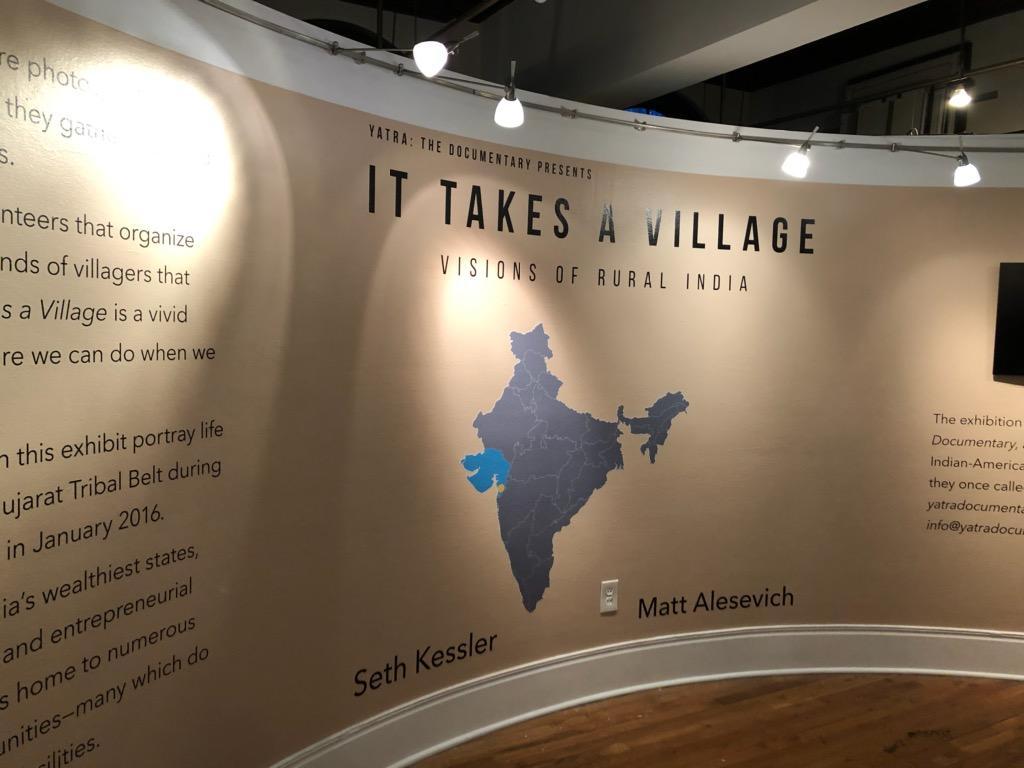
Christopher Alesevich
During a Wall Street bar’s happy hour in 2015, journalist and director Matt Alesevich asked graphic designer Seth Kessler to accompany him on a medical mission to India.
To Alesevich’s surprise, Kessler “said yes on the spot.”
Kessler took numerous photographs of this visit to the rural areas of Gujarat, India. 23 of these photographs are now on display at the Forest To Shore Gallery in downtown Stratford in an exhibit titled “It Takes a Village.”
“The photographs bring awareness and get people to see another side of life and living that they might never experience,” Alesevich said.
Alesevich has been on three medical missions to India as a print journalist. He accompanies volunteer doctors as they treat people in the rural and tribal regions of India. Alesevich noted that he has always been interested in international volunteer-based and humanitarian projects. He was introduced to this group when his college roommate’s sister, who is involved in the Rotary Club of Cleveland, notified Alesevich about a medical mission in 2013.
Alesevich described India’s rural landscape as a different world. He said that the longer he stayed, the more curious and inspired he was.
“I usually don’t repeat the same travel experiences, but there was something about all the visuals and people and the stories,” Alesevich said. “I knew I wanted to go back [to India] a second time and try to tell the story a little more.”
Alesevich wanted to return to India with someone whose visual media talents complemented his journalistic ones. He first met Kessler at an agency in 2010, where Kessler worked as a designer. Alesevich said that he knew these skills at the professional level would translate into “taking the story to the next level visually.”
As a journalist, Alesevich began to get in touch with editors interested in stories about marginalized communities in India. While they were working on one of their projects with the television news channel Al Jazeera, Kessler took multiple photographs that came out “strikingly,” Alesevich said.
The photos reflect the lives of the patients and residents of Gujarat, rather than doctors on the mission, according to Alesevich. “We’re taking you inside life [inside] a pop-up medical clinic,” Alesevich said.
Kessler noted that while selecting pictures for the gallery, they looked at both the aesthetic quality of an image and whether the image could tell a story.
“We didn’t want this display to show poor people as struggling and needy, because that’s not who they were,” Kessler said. “We wanted to capture [the people] in a realistic manner and use photos that show a breadth of emotion and paint a picture of what Gujarat is.”
Yet this gallery only supplements a project Alesevich has been working on since last year. He has been accompanying doctors to film a documentary called “Yatra,” which follows volunteer Indian-American doctors on their missions. Alesevich said that stories in print could not sufficiently capture the vibrancy of people and their stories in India. In what he described as a “natural transition,” he turned to filming his experiences.
The photography exhibit serves to garner funding for and spread awareness of the documentary. Alesevich plans to release the documentary next year.
Kessler said that Alesevich’s projects are a testimony to the greater message of healthcare as a human right. “No matter what your life is, I think people are entitled to medical care,” he added.
According to Alesevich, the documentary is being made at an opportune moment. The medical mission started with retired Indian American doctors. These doctors currently seek to pass their project onto a younger generation.
Ankita Modi, one of the younger doctors Alesevich has followed, is a pediatrician in Charlotte, North Carolina. Modi said Alesevich’s project was “incredible.” She said she is grateful that Alesevich has taken interest and valued what the doctors are doing.
She said that through the documentary, Alesevich has taken a “deeper dive” into what it means to live in these tribal villages. While she is limited to a doctor-patient perspective, Alesevich’s film explores the villages and homes of these people, showing his deep empathy and appreciation for how they live, Modi said.
Modi said that Kessler’s images do an incredible job of capturing the beauty of little moments in the mission.
“People often assume that treating patients in these rural and tribal regions of India is sad and depressing,” Modi said. “In fact, I am inspired and motivated because the people I have met are resilient and content.”
Alesevich said that he is open to students who may be interested in working on the documentary in any capacity.
Freya Savla | freya.savla@yale.edu







